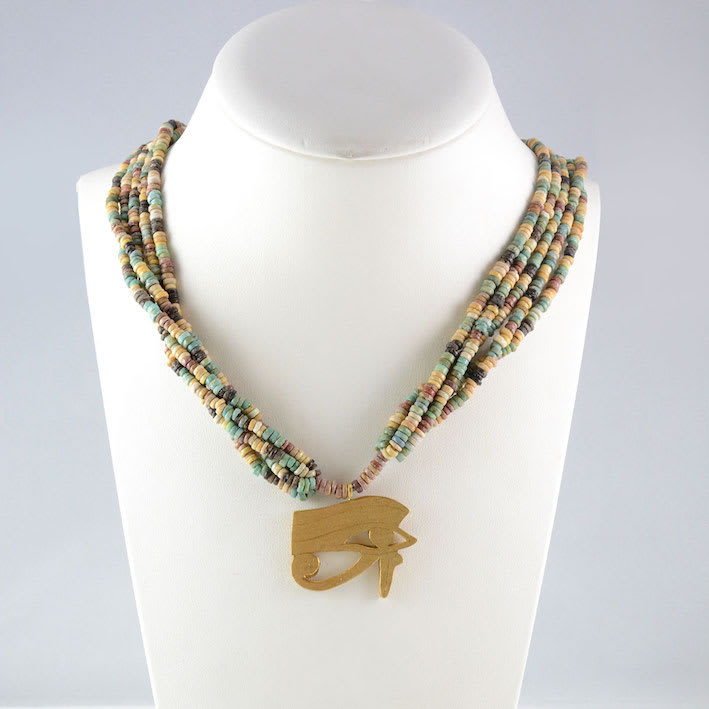Five Strand Egyptian Faience Bead Necklace with a Gold Eye of Horus Pendant, 1900 BCE - 1100 BCE
Faience and Gold
FJ.2433
Further images
The Ancient Egyptian faience beads are guaranteed to date from the Middle to New Kingdom while the 18 Karat gold Eye of Horus amulet is modern. Most ancient Egyptian beads...
The Ancient Egyptian faience beads are guaranteed to date from the Middle to New Kingdom while the 18 Karat gold Eye of Horus amulet is modern.
Most ancient Egyptian beads were made of faience, a glass-composite glaze which was introduced as early as the Pre-Dynastic period. According to Egyptologists, most beads were made on an axis, probably of thread, which would burn up during firing, leaving a hole. Disc, ring and tubular beads were made by coating the axis with the unfired body-paste, rolling the cylinder to an even diameter on a flat surface, and then scoring it with a knife into sections of the desired length. Other shapes, such as ball beads, were rolled between the hands and perforated while still wet with a stiff point such as a wire needle. The beads were then dried, coating with glaze (if the glaze had not already been mixed with the paste), and fired. The firing process often gave the beads a beautiful translucent quality. The majority of faience beads are blue or green in color, but black, red yellow and white ones were also produced, especially in the New Egyptian Kingdom.
Most ancient Egyptian beads were made of faience, a glass-composite glaze which was introduced as early as the Pre-Dynastic period. According to Egyptologists, most beads were made on an axis, probably of thread, which would burn up during firing, leaving a hole. Disc, ring and tubular beads were made by coating the axis with the unfired body-paste, rolling the cylinder to an even diameter on a flat surface, and then scoring it with a knife into sections of the desired length. Other shapes, such as ball beads, were rolled between the hands and perforated while still wet with a stiff point such as a wire needle. The beads were then dried, coating with glaze (if the glaze had not already been mixed with the paste), and fired. The firing process often gave the beads a beautiful translucent quality. The majority of faience beads are blue or green in color, but black, red yellow and white ones were also produced, especially in the New Egyptian Kingdom.





